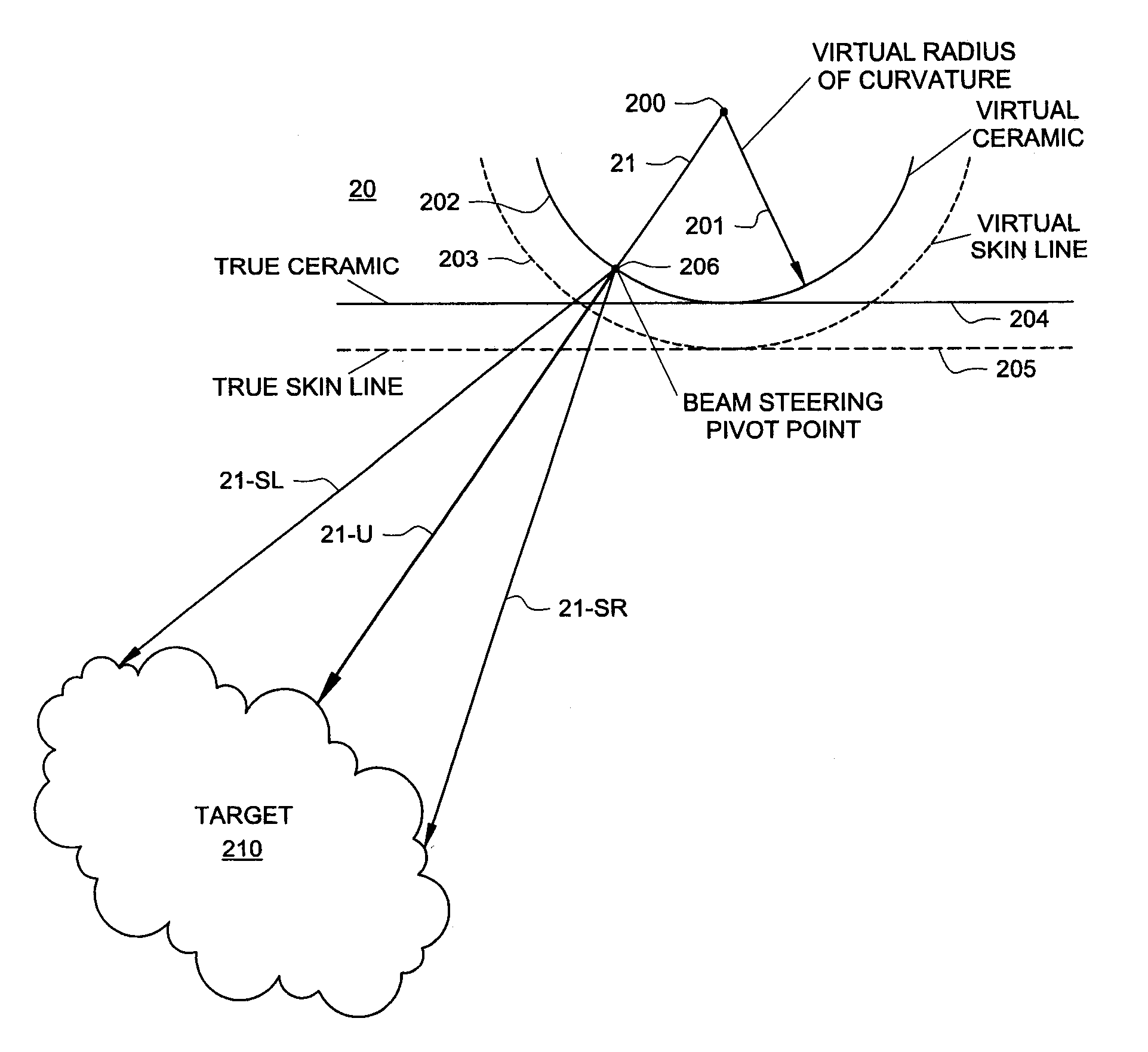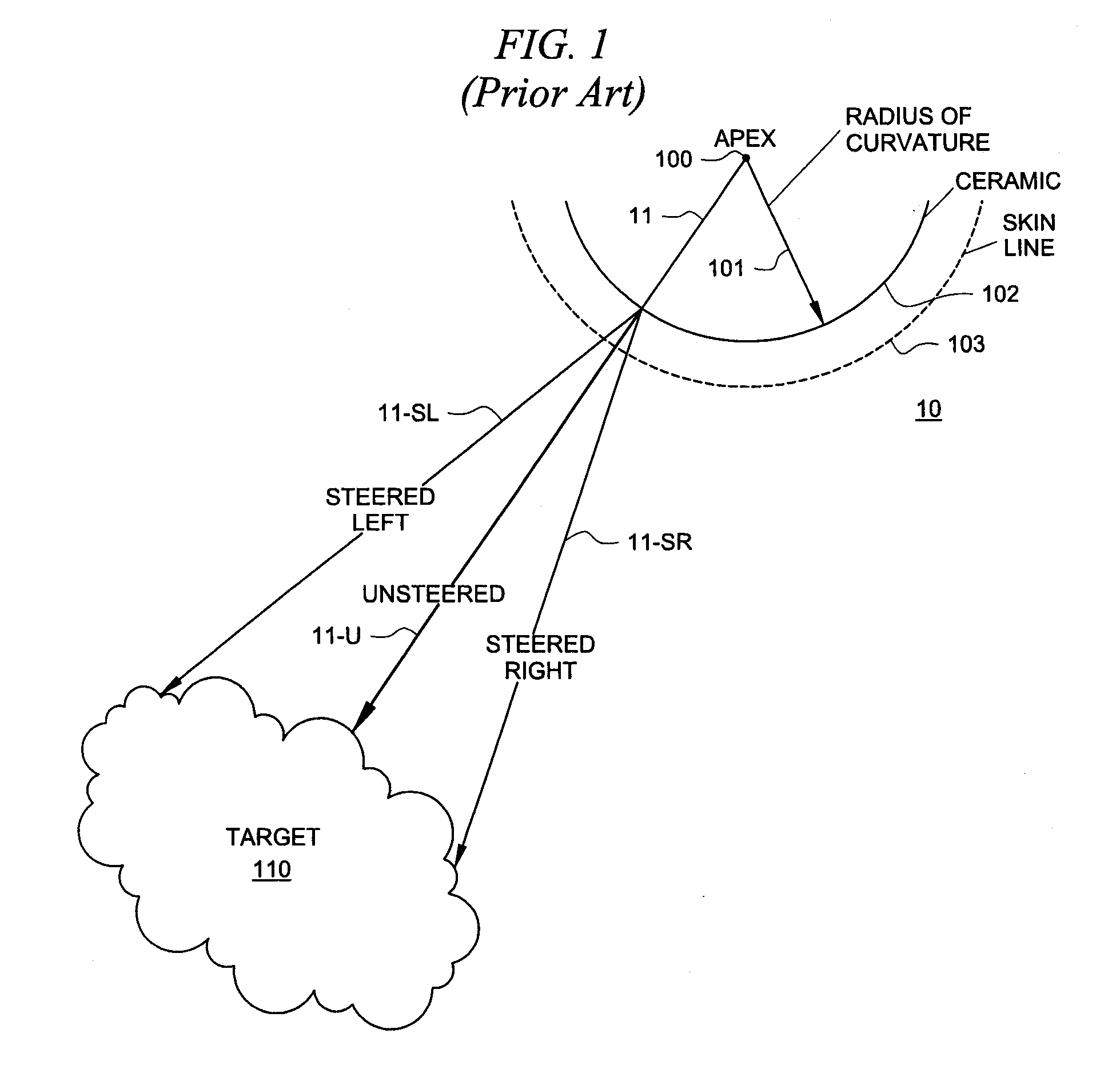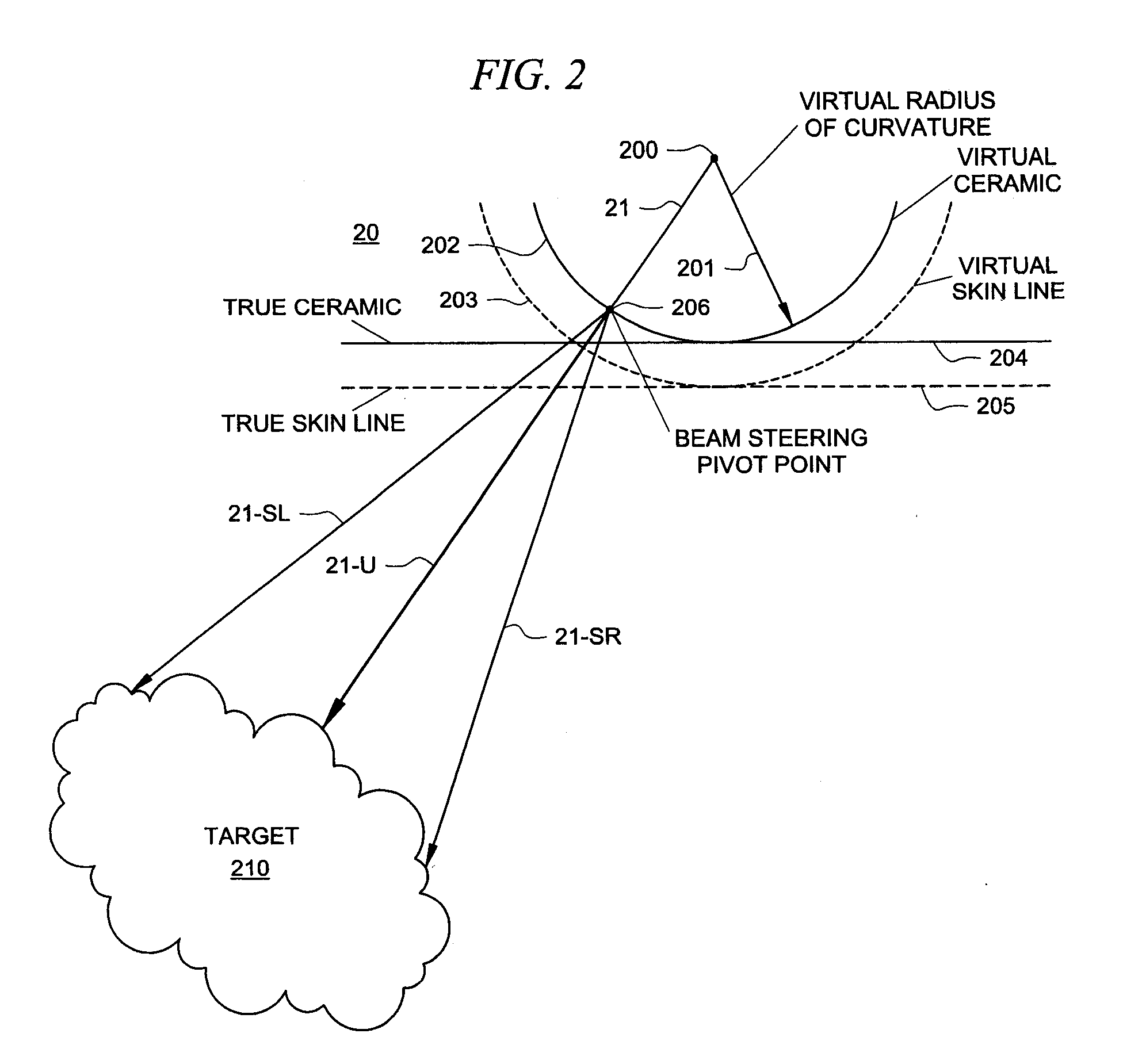System and method for spatial compounding using phased arrays
a phased array and spatial compounding technology, applied in the field of ultrasound imaging, can solve the problems of large amount of computation, large table size, and complex spatial compounding for phased arrays
- Summary
- Abstract
- Description
- Claims
- Application Information
AI Technical Summary
Benefits of technology
Problems solved by technology
Method used
Image
Examples
Embodiment Construction
[0016]FIG. 1 shows one schematic illustration 10 of an embodiment of a the operational theory of image generation using a curved array in accordance with the prior art. FIG. 1 shows one method for spatially compounding beams formed along a curved array. This technique is well-known in the art and can be accomplished, for example, using concepts discussed in the above-identified U.S. patent application Ser. No. 11 / 749,319.
[0017]Curved array 102 has apex 100 and radius of curvature 101. Unsteered ray 11, emanating from apex 100 is perpendicular to the array surface, which in one embodiment can be ceramic. This ray (also called a beam) is steered left (11SL) and steered right (11SR) as discussed in the P35 application to paint the target, such as target 110 below skin line 103 of the subject. This trio of beams (as well as many others as are desired) can be moved anywhere along aperture 102 to form the different look directions that need to be acquired for spatial compounding.
[0018]The...
PUM
 Login to View More
Login to View More Abstract
Description
Claims
Application Information
 Login to View More
Login to View More - R&D
- Intellectual Property
- Life Sciences
- Materials
- Tech Scout
- Unparalleled Data Quality
- Higher Quality Content
- 60% Fewer Hallucinations
Browse by: Latest US Patents, China's latest patents, Technical Efficacy Thesaurus, Application Domain, Technology Topic, Popular Technical Reports.
© 2025 PatSnap. All rights reserved.Legal|Privacy policy|Modern Slavery Act Transparency Statement|Sitemap|About US| Contact US: help@patsnap.com



